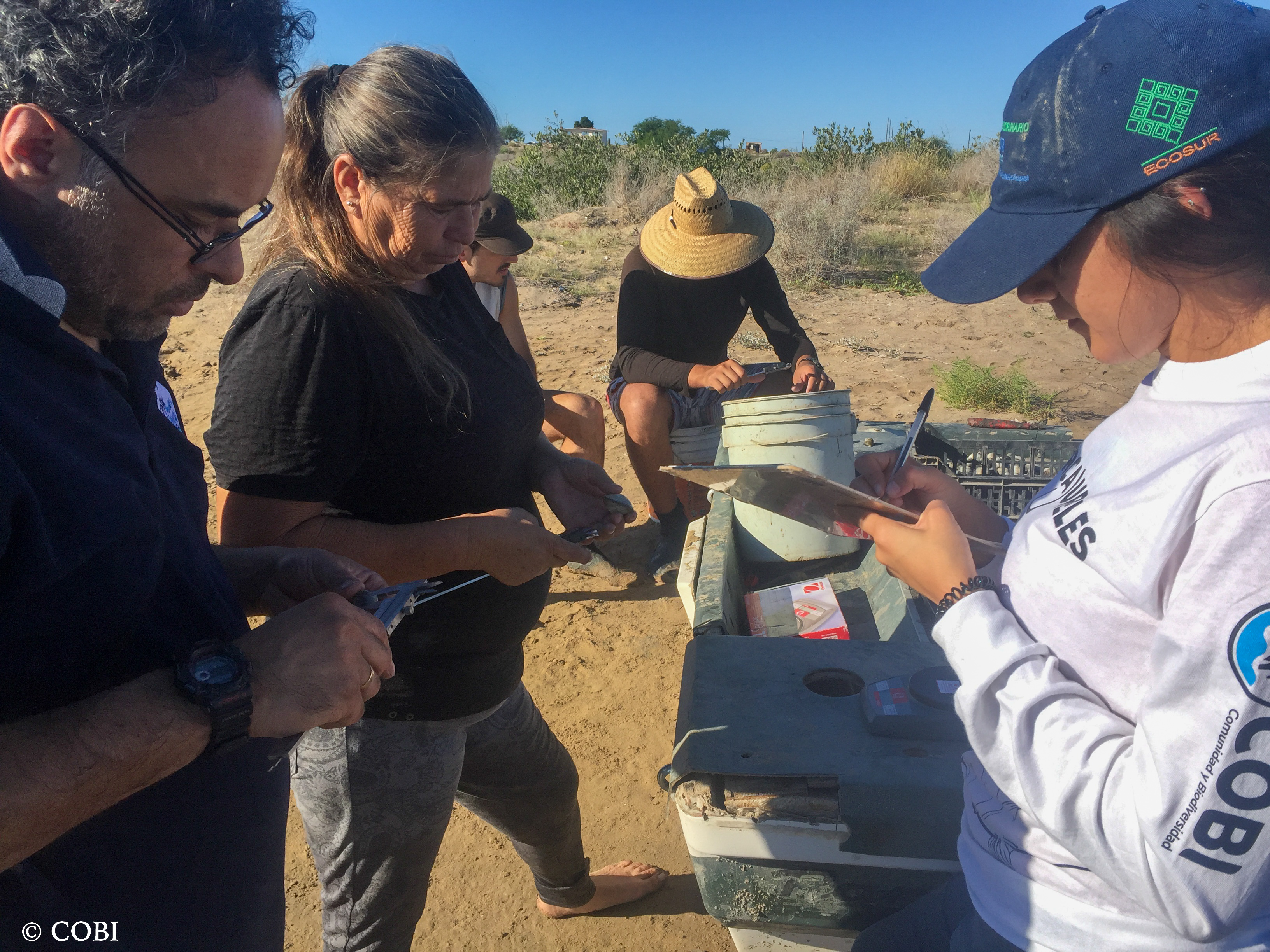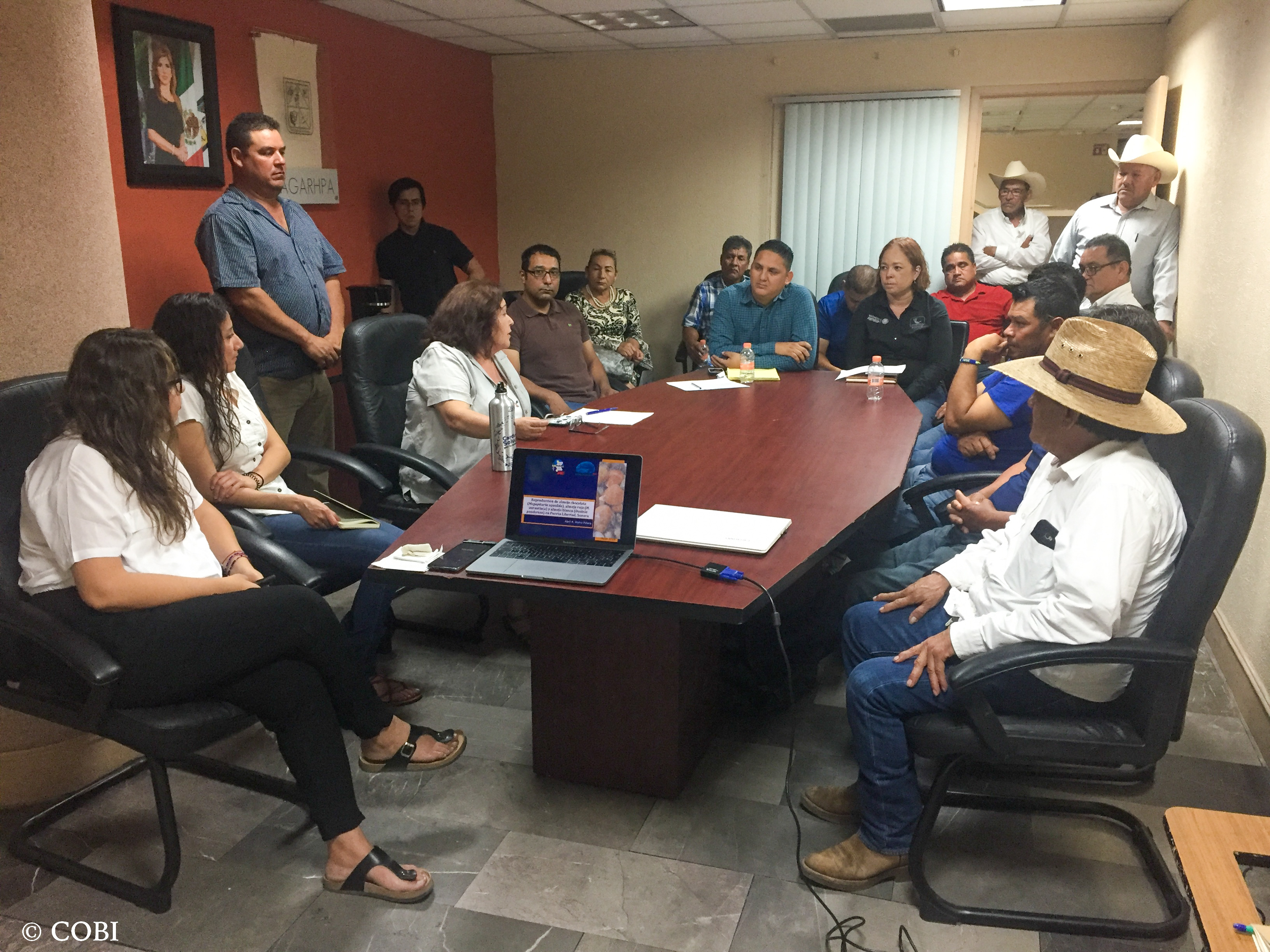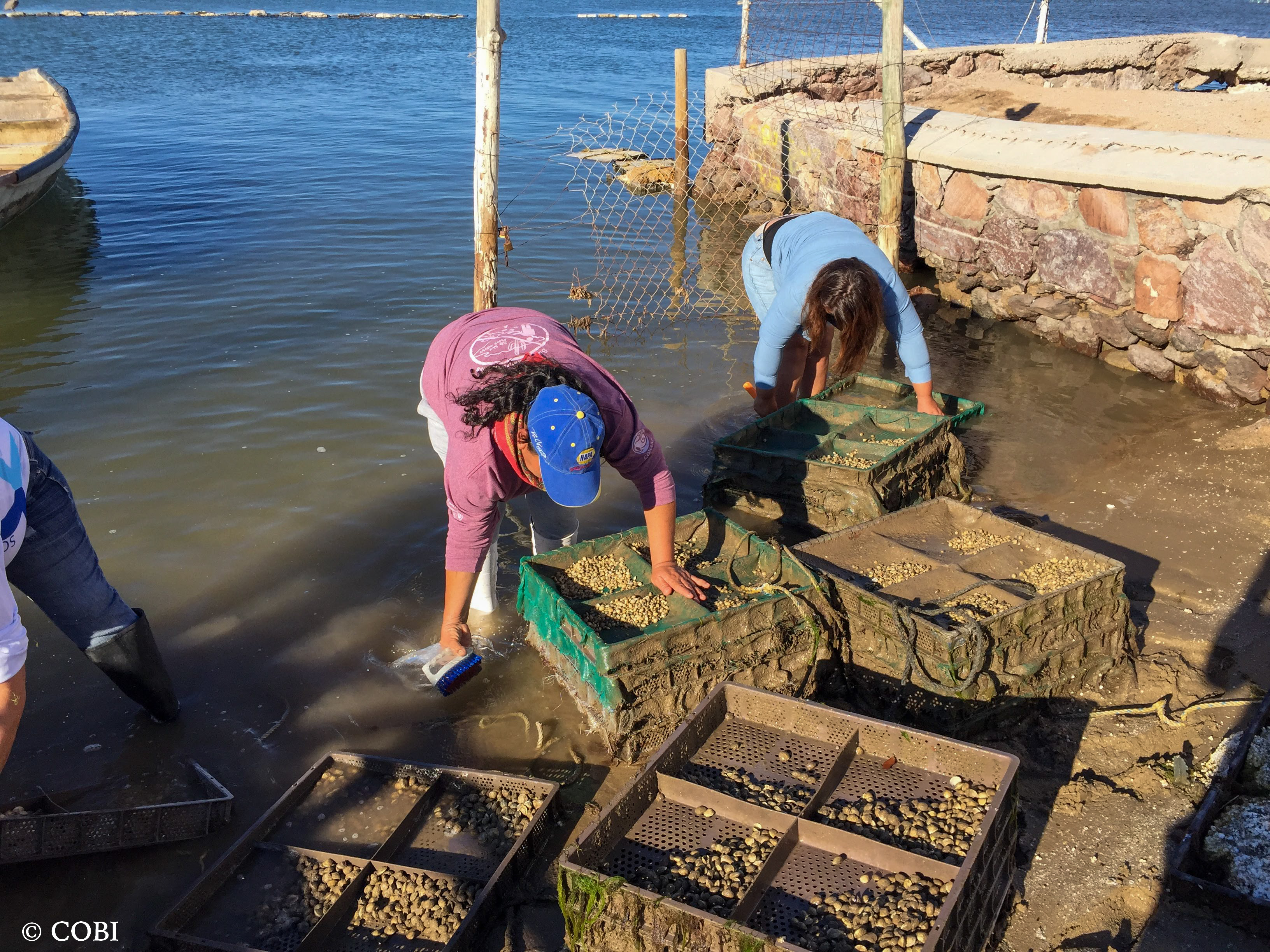



Fisheries are complex systems with ecological and social components in which different challenges have been identified. One of these is to visualize the work performed by women in the fishery, which usually goes unnoticed because it is related to post- and pre-capture activities, and the rest of the value chain.
In 2017, COBI identified that, in the clam fishery in a fishing community in Sonora, women's work was not recognized as part of the fishery or given the opportunity to be part of the family fishing business.
COBI developed strategies together with the fisherwomen and fishermen to recognize the work of women and formalize their participation as members of the fishery. To this end, workshops were given to both men and women in the community, focusing on leadership and gender equality, and training was provided to women on database management. This has brought results with economic, social and personal benefits for the fisherwomen and the fishing organizations, since it improved the organization and administration of the cooperatives.
- Train and raise awareness among women and men involved in the fishery on the importance of gender equality.
- Generate equitable participation opportunities for women involved (although not recognized) in the fishery, and recognize their capabilities.
- Train women in biological and fisheries monitoring, as well as in community leadership.
- Recognize that although women do not participate in resource extraction, their work is part of the fishery system.
- Trained women can collaborate as trainers or quality supervisors.
- The management and organization of the bivalve value chain has changed favorably since women joined the management team.
- A women-only cooperative has been created to carry out the cultivation, monitoring, and surveillance of the estuarine clam.
- Inclusion should not be forced; it should be born out of reflection and commitment. It is necessary that there is a process of sensitization of gender recognition with all the members of the cooperative.
- Teams that operate with women, men, young people and older people obtain better results, since they combine a greater diversity of skills that complement each other.
- The productive sector should be viewed from an approach based on the fishery as a whole, not just extraction.
- Present women with success stories of other fisherwomen so that they can be inspired, recognize that they are not isolated, and continue to disseminate this idea.